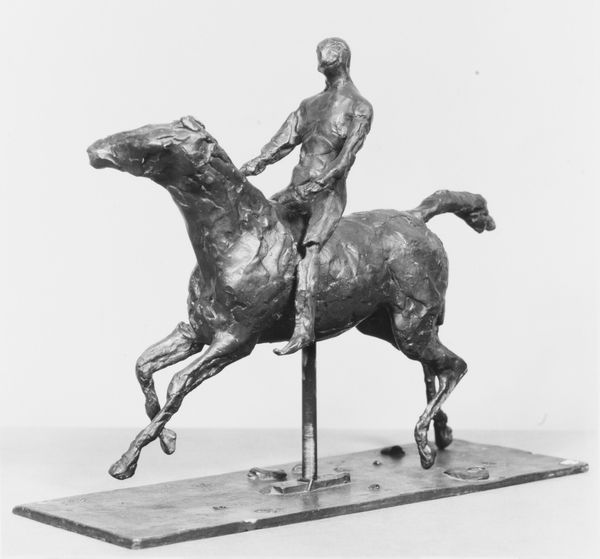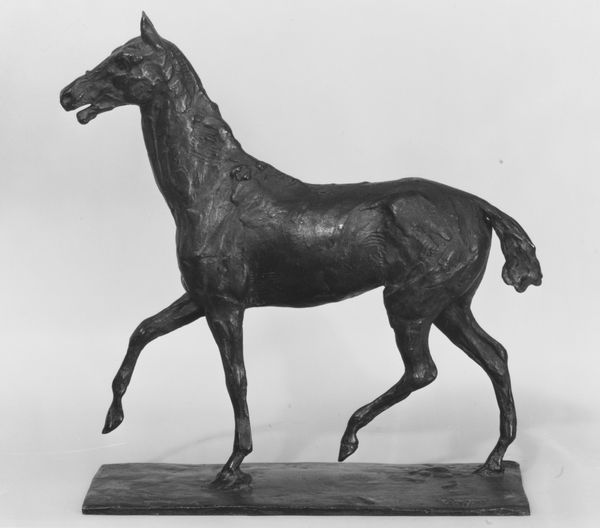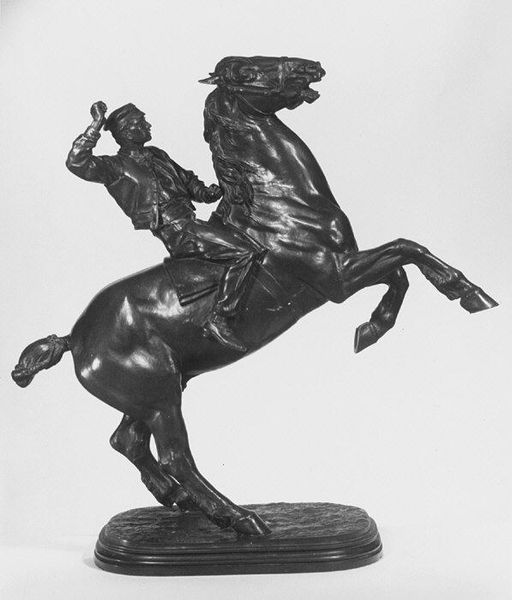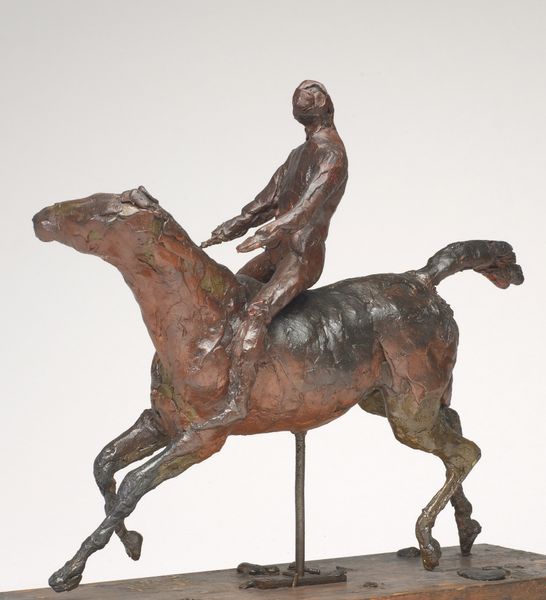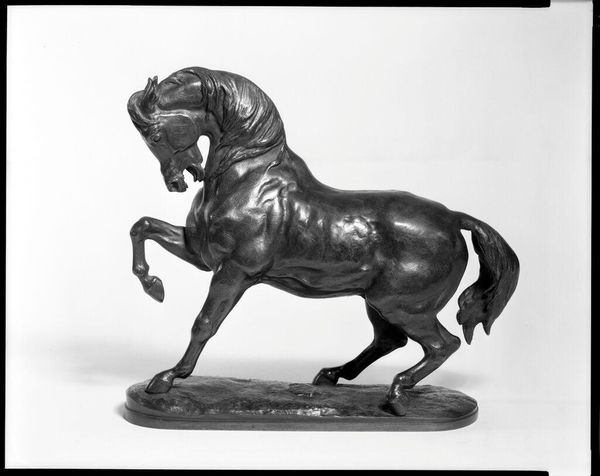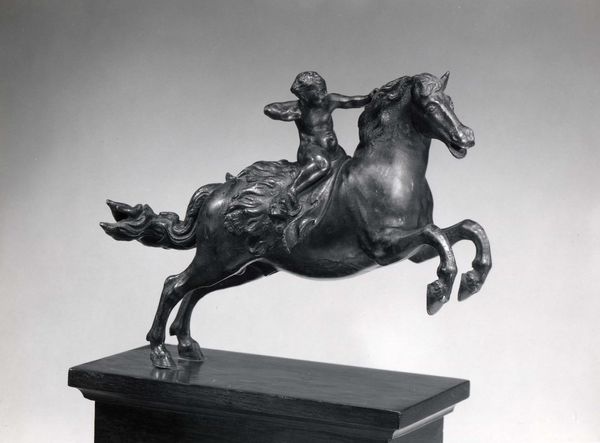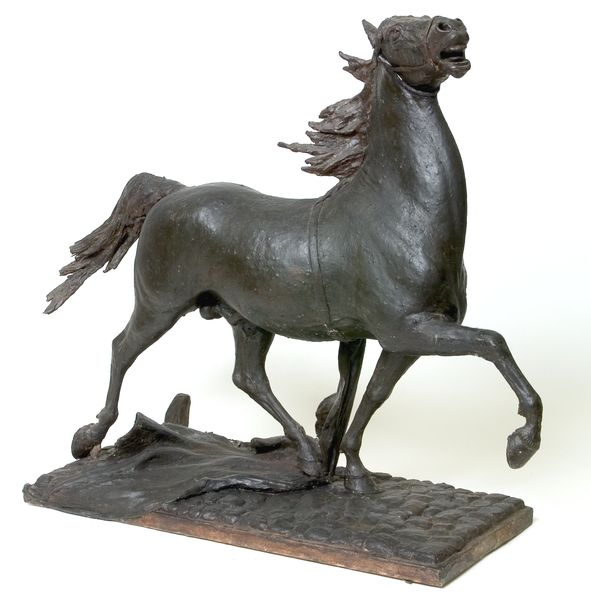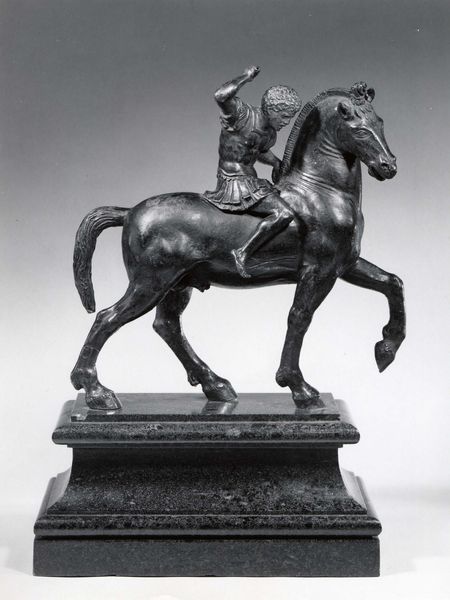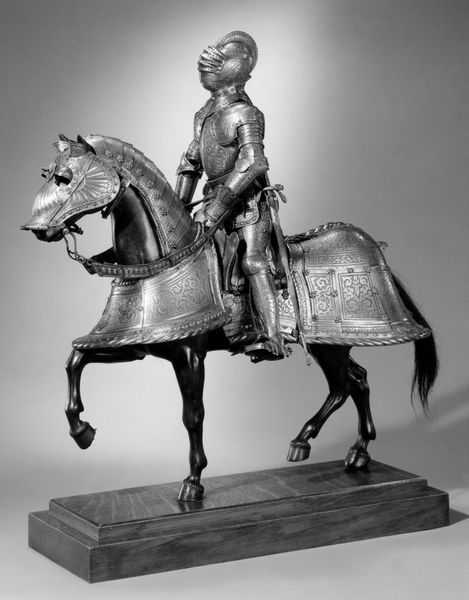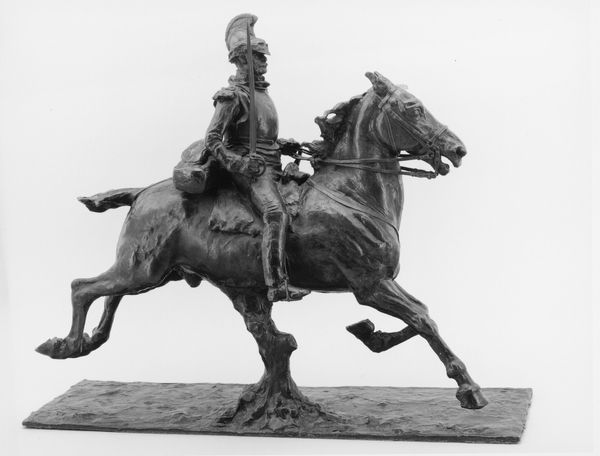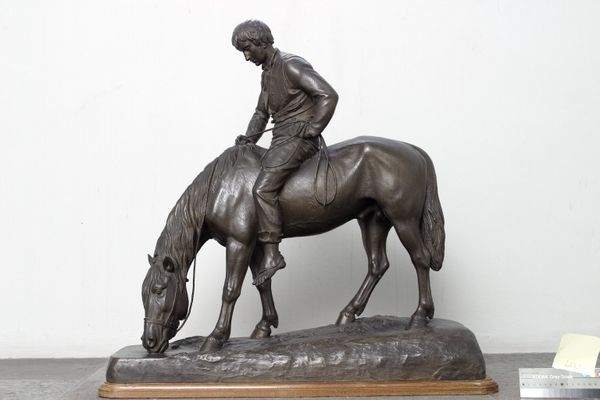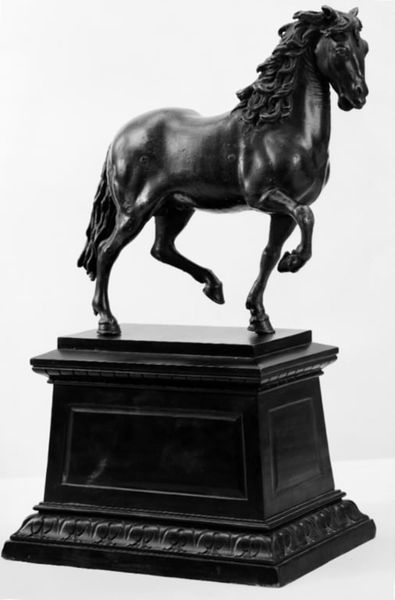
bronze, impasto, sculpture
#
sculpture
#
landscape
#
bronze
#
figuration
#
impasto
#
male figure
#
sculpture
#
realism
Dimensions: 38.5 cm (height) x 38.5 cm (width) x 19 cm (depth) (Netto)
Curator: Our next piece is Theodor Philipsen's bronze sculpture from 1907, titled "Boy on a Donkey". Editor: The figures are fascinating; it feels incredibly raw, unfinished, and kind of awkward. It’s not idealized at all. The boy looks almost apprehensive! Curator: Philipsen, known for his plein air landscapes, frequently depicted animals, viewing them through a lens shaped by social realities. I’d like to ask: What commentary do you think Philipsen may have intended, if any? Editor: Right. I think that depicting a naked boy riding a donkey carries interesting social connotations, especially considering the lack of refinement. There is something vulnerable, even infantilized, about him. This depiction is in direct contrast to how childhood or the male nude might usually be portrayed in sculpture from that time. Curator: I agree. While referencing classical sculpture, it consciously breaks from its aesthetics. Given Philipsen’s socio-political consciousness, the roughness could signal empathy towards working-class or rural existences where such idealization felt detached from reality. Perhaps he presents childhood as toil instead of innocence? Editor: Yes, the choice of bronze itself is important, historically associated with permanence, status, and idealized forms. Yet here, it's rendered almost earthy. The sculpture encourages a conversation about who gets monumentalized and in what form. Curator: Furthermore, considering the power dynamics implied, the image of the child positioned atop the animal may represent certain kinds of dominance and control, worth interrogating during that time of rapid urbanization in Europe. Editor: Absolutely. The piece isn’t simply a nostalgic glance; it's a reflection on shifting social strata and rural displacement, encapsulated within this humble interaction between a child and beast. The art raises compelling questions. Curator: It reveals how artistic choices interact with broader social and political discourses.
Comments
No comments
Be the first to comment and join the conversation on the ultimate creative platform.
